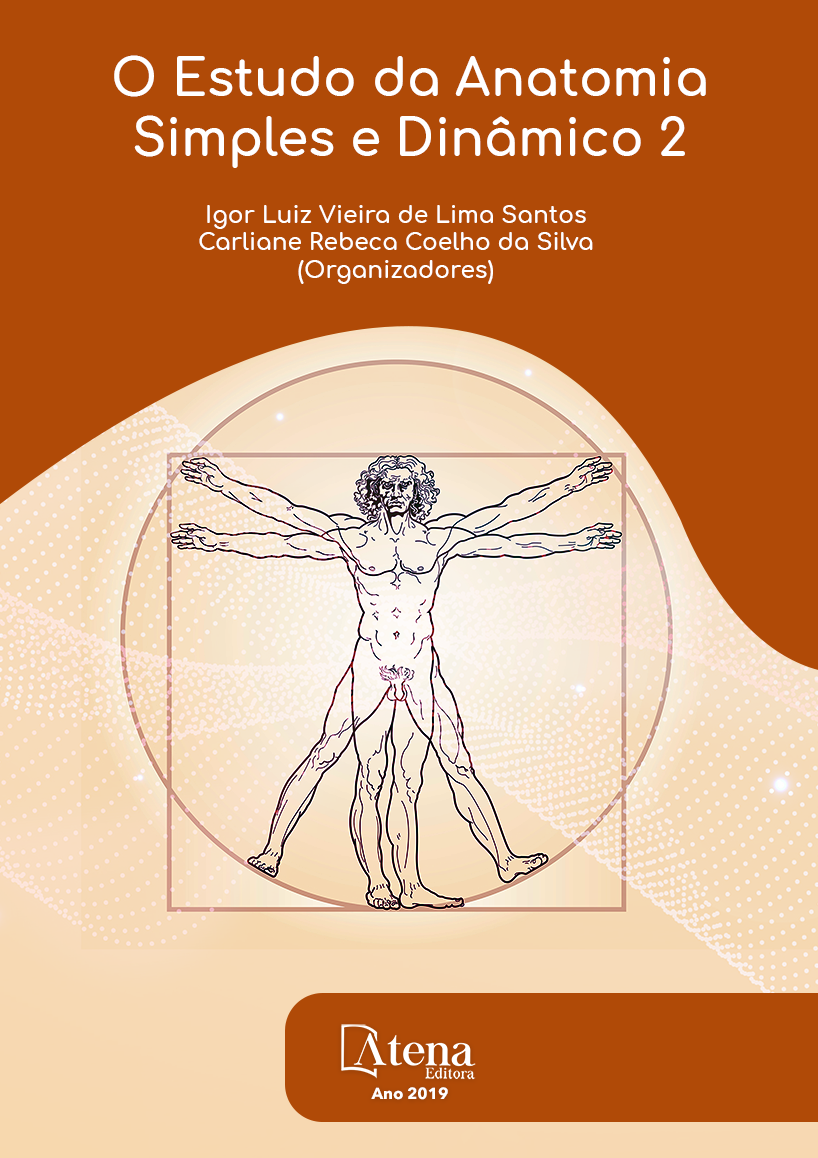
PADRÕES ANATÔMICOS DO TRONCO DO NERVO FACIAL EM FETOS BRASILEIROS
O nervo facial é responsável pelo
suprimento motor, sensitivo e parassimpático
da face. O conhecimento das variações
anatômicas do VII par de nervo craniano tem
grande importância clínica, principalmente
para a manutenção da integridade anatomofuncional
da face durante a realização de
cirurgias na região. Com o objetivo de analisar a
morfologia, morfometria do nervo facial em fetos
humanos, foram utilizados 60 fetos humanos
formolizados do laboratório de anatomia da
Universidade Federal de Sergipe. Inicialmente,
foram identificados e distribuídos os cadáveres
em grupos de acordo com a idade fetal e sexo.
Em seguida, foi realizada a dissecação dos
cadáveres para a exposição do nervo facial
e registro fotográfico para análise da origem,
divisão e possíveis relações anatômicas. Por
fim, o comprimento do tronco do nervo facial
foi medido por três avaliadores a partir de
delimitações com linhas de nylon e paquímetro
eletrônico (Stainless Hardened) para obtenção
do valor médio. A análise estatística foi realizada
através da Análise de Variância (ANOVA – Two
way), seguido pelo pos hoc Student Newman
Keuls, considerando p<0,05. Os resultados do
presente estudo indicam a bifurcação do tronco
principal de sétimo par de nervo craniano como
padrão anatômico em ambos os gêneros.
Quanto a morfologia, há aumento progressivo
do nervo conforme a idade gestacional, além
de similaridade entre os gêneros e os lados da
hemiface. Embora as relações anatômicas com
a glândula parótida e com a veia retromandibular
sejam relevantes para a localização da estrutura
nervosa, não apresentam associações
expressivas em relação ao gênero, lateralidade
e idade.
PADRÕES ANATÔMICOS DO TRONCO DO NERVO FACIAL EM FETOS BRASILEIROS
-
DOI: 10.22533/at.ed.33119250921
-
Palavras-chave: Nervos cranianos, Morfologia, Nervo Facial.
-
Keywords: Cranial nerves, Morfology, Facial nerve
-
Abstract:
The facial nerve is responsible for motor, sensory and parasympathetic
supply of the face. The knowledge of the anatomical variations of the VII pair of cranial
nerve has great clinical importance, mainly for the maintenance of the anatomic and
functional integrity of the face during surgeries in this region. Aiming the analysis of
the morphology and morphometry of the facial nerve in human fetuses, 60 formolated
human fetuses from anatomy laboratory of the Federal University of Sergipe were
used. Initially, corpses were identified and distributed in groups according to fetal
age and sex. Subsequently, cadavers were dissected to expose the facial nerve
and photographic record was performed to analyze the origin, division and possible
anatomical relationships. Finally, the length of the facial nerve trunk was measured by
three evaluators with nylon lines and a pachymeter (Stainless Hardened) to obtain the
average value. Statistical analysis was performed using Analysis of Variance (ANOVA -
Twoway), followed by pos hoc Student Newman Keuls, considering p <0.05. The results
of the study indicate the bifurcation of the main trunk of the seventh cranial nerve pair as
an anatomical pattern in both genders. In terms of morphology, there is a progressive
increase of the nerve according to the gestational age, besides similarity between the
genders and the sides of the hemiface. Although the anatomical relationships with the
parotid gland and the retromandibular vein are relevant for the location of the nervous
structure, they do not present expressive associations regarding gender, laterality and
age.
-
Número de páginas: 15
- LARISSA DE OLIVEIRA CONCEIÇÃO
- LAIANE DA SILVA CARVALHO
- OLGA SUELI MARQUES MOREIRA
- DIOGO COSTA GARÇÃO
- JULIANA LIMA MENDONÇA


